Don’t take your chimney for granted.
Chimneys are designed to safely funnel smoke and hot gasses away from the interior of your house. Inspect your chimney at the beginning of each heating season. Shine a flashlight up inside and look for obstructions such as leaves or birds’ nests and check for soot buildup. Burning highly resinous wood such as pine will cause flammable tar to build up on the inner walls of the chimney.
Look for any missing or cracked flue tiles. From the outside (or the roof), look for crumbling mortar, loose or missing bricks, or flashing that has pulled away from the roof and chimney. Check your chimney for cracks, some are harmless, but others may need repair to prevent a fire hazard.
More on chimneys.
An authority no less prestigious than the National Fire Protection Association’s landmark code NFPA 211 recommends that homeowners have their chimneys inspected yearly and cleaned when necessary.
Animals love to build nests in chimneys. Nests in turn can cause dangerous blockages and/or ignite a chimney fire in a dirty chimney. Have a chimney professional inspect your chimney. When your chimney professional visits he or she will check for and remedy any blockages. They will also explain how you can further protect your chimney from these animal-related risks.
Does your chimney have a good damper and is it working properly? Your damper is supposed to keep out the cold air when you are not burning wood in the fireplace. The trouble is, most dampers don’t seal very tightly and thus can cost you $200 or more each year in lost heat or cold, resulting in lost utility dollars. Your chimney professional will check the condition of your damper when he visits.
Gas log fireplaces.
Should you have your chimney inspected if you have a gas fireplace? Yes. First, if your fireplace was converted from natural to gas at some point, you could have dangerous creosote still in your chimney from before you had the logs installed. Second, chimney critters could care less that you burn gas logs – their nests are just as dangerous and need to be addressed and prevented no matter what you burn.
Your chimney liner.
A brick and mortar chimney should have an inner line of defense against heat, fire and flame – it’s called a chimney liner. It may be in great shape, it may be in horrible shape – you can’t tell by looking. Your chimney professional will use special inspection tools to give your liner a full check up – just another reason to call and schedule an appointment.
Chimney fires.
What if you’re at a home where a chimney fire breaks out? Call the fire department, get your family and yourself out of the house, and hope for the best. After a chimney fire there is often structural damage that now needs to be addressed – that is if the house is still standing. A chimney professional should look at your chimney.
Bricks and mortar aren’t waterproof. In fact they soak up moisture like a sponge. After years of this they start to erode and put your chimney safety at risk. Your chimney professional may recommend a very reasonable waterproofing procedure that will reduce or eliminate that risk.
Practice safety first in every home with a fireplace.
If you’ve read my tips on home safety, fire safety, check lists, etc. you should have working smoke alarms and carbon monoxide detectors in your house. You should also have checked those alarm batteries, right? No doubt you keep a household fire extinguisher right near your hearth or woodstove, right? Sure you do. But your chimney professional will double check this stuff anyway when he visits–because your safety is his main concern.
What is the best wood to burn in the natural fireplace?
Wood that is split, seasoned, and dry. After that, hardwoods like oak and ash and maple are great – they have more heat value than soft woods. But remember to first use wood that is seasoned, then try for wood that is hard. Who in their right mind would remove warm fireplace and woodstove ashes in anything but a sturdy metal container? You’d be surprised…don’t let it be you.
Your clothes dryer has a chimney and you should have that inspected as well.
Your dryer vent that runs from the dryer to the outdoors is a chimney, and they do get clogged! A chimney professional can check yours – he will be able to inspect it and clean it if necessary. Read my article on dryer fires.
Even if it’s a warm winter don’t neglect your chimney.
After a warm winter your wood burning system may actually need attention more badly than after a cold one. Here’s why: when it’s warm you tend to burn lower fires – which are smokier – which means more dangerous soot and creosote gets deposited in your chimney. So have your chimney inspected yearly, and cleaned if necessary. Your family deserves it.
More fireplace safety.
Tree limbs and branches hanging out over your chimney are dangerous – keep them trimmed.
You should never go to bed or leave the house when you have a fire burning in your fireplace. A hot ember could escape and the next thing you know…well, you can imagine the rest.
The hearth seems like a great place to put decorations and other fancy looking decorations. Don’t do it – they are often flammable. There is one safe rule–keep the area near your hearth free of anything other than fireplace equipment.
Bob Beisbier, owner of BK Home Inspection, is a Certified Master Home Inspector who has been providing professional and thorough home inspections in southeast Wisconsin for over 12 years. Bob is Infrared certified, DILHR Certified, and provides Home Energy Tune-ups, Environmental Data Reports, Pre-sale Home Inspections and Pre-offer Home Inspections.






